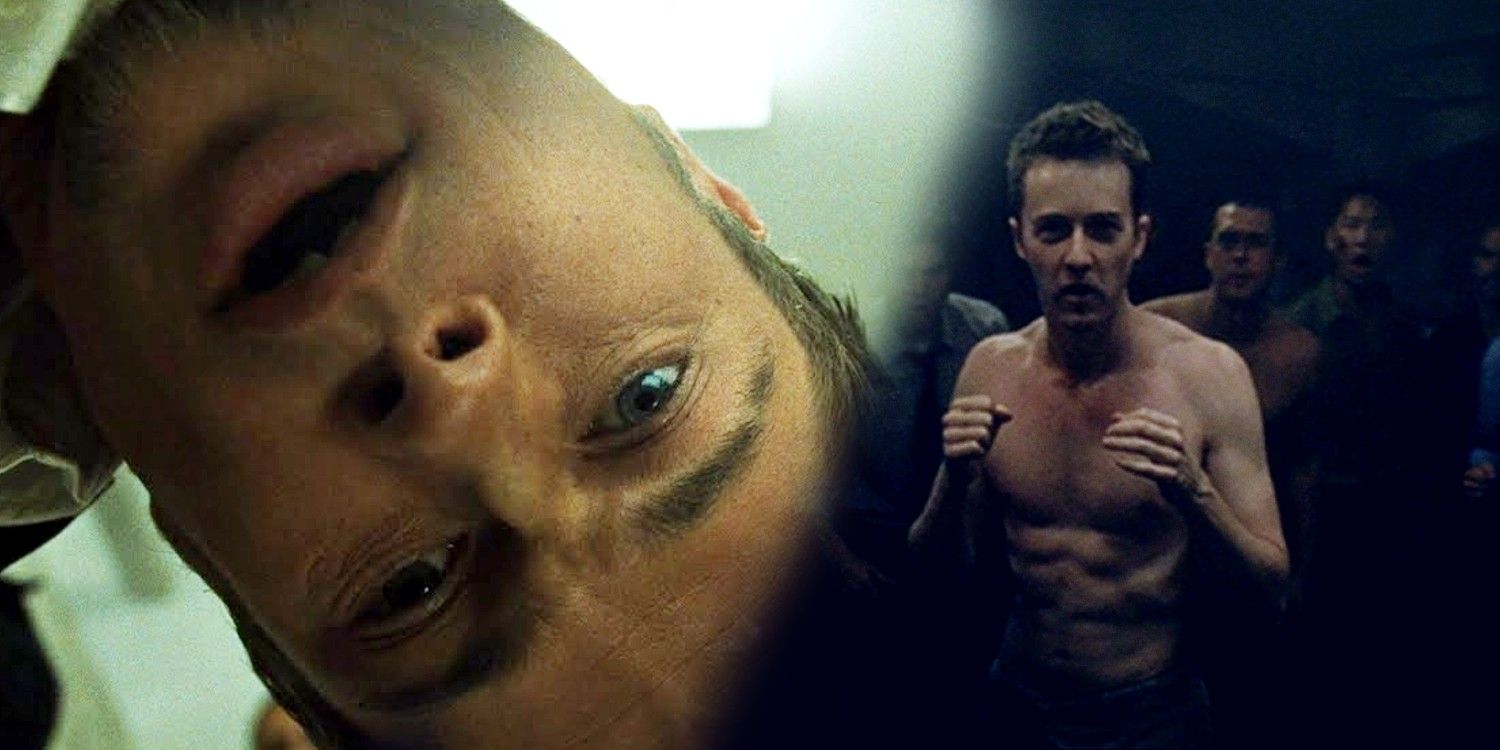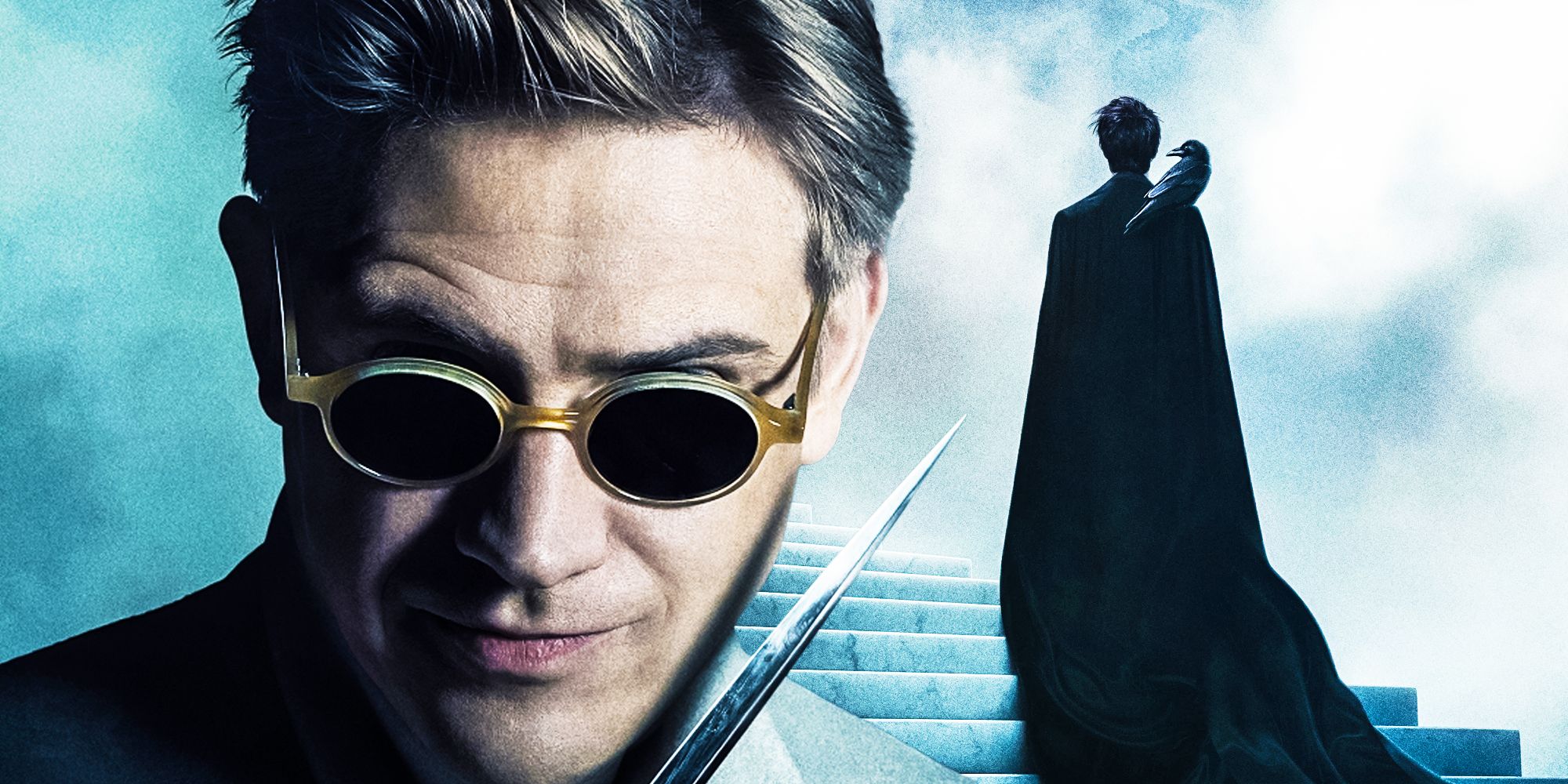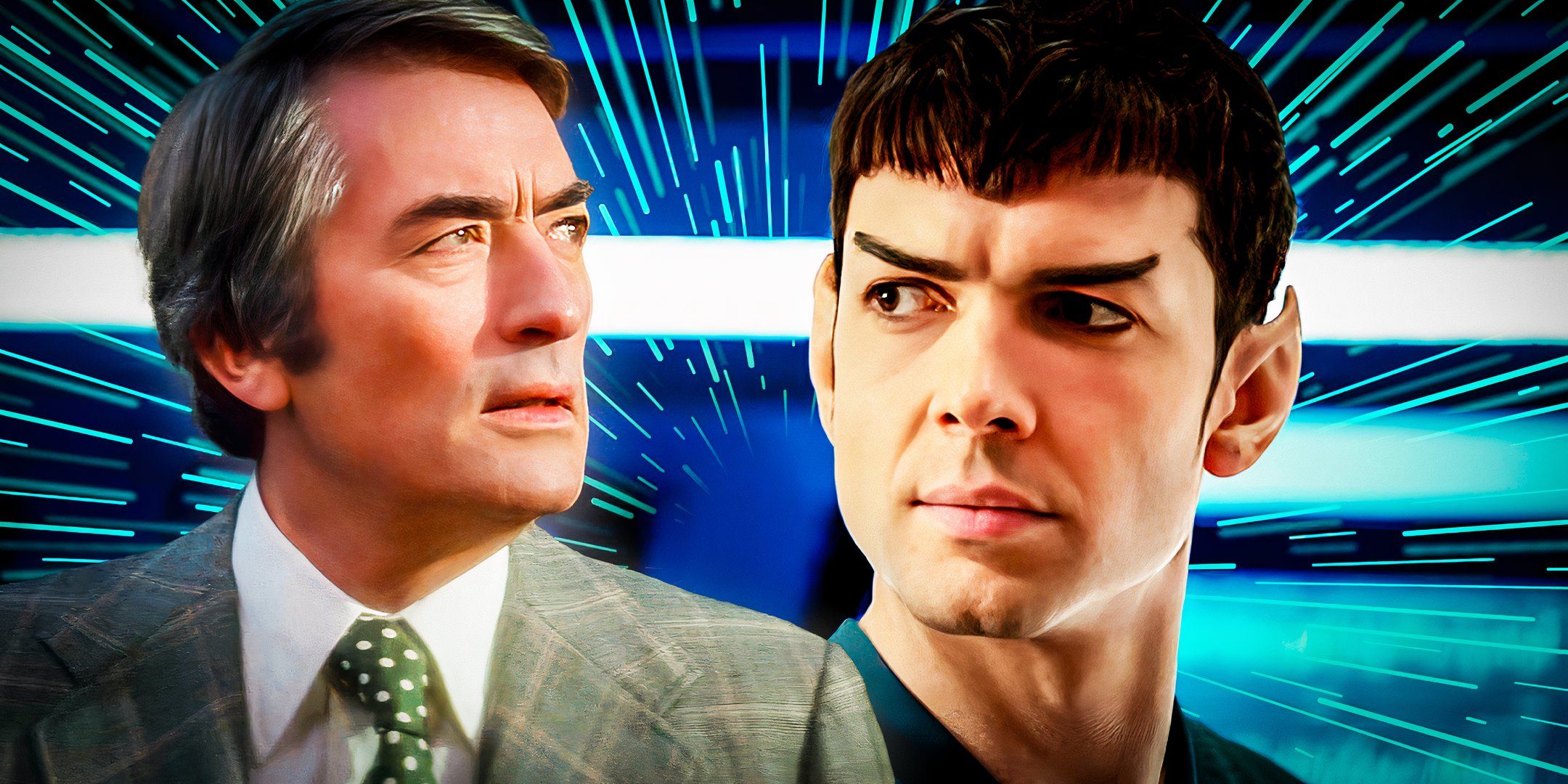While The Far Side is known for its surreal, sometimes morbid approach to life, many of its funniest comics come from breaking the fourth wall with some well-placed meta humor. Essentially referring to a piece of art that references its own existence – for example, Ferris Bueller or Deadpool talking directly to the audience – meta humor is more popular than ever in shows like Rick and Morty and She-Hulk, but Far Side got there first.
Here are the 10 best uses of meta humor in The Far Side, including the last strip the franchise published in its original run and references to some competing franchises that Gary Larson took the opportunity to lampoon with surprisingly dark jokes.
10 Cartoon Teenagers
Deadpool Stands on the Shoulders of Giants
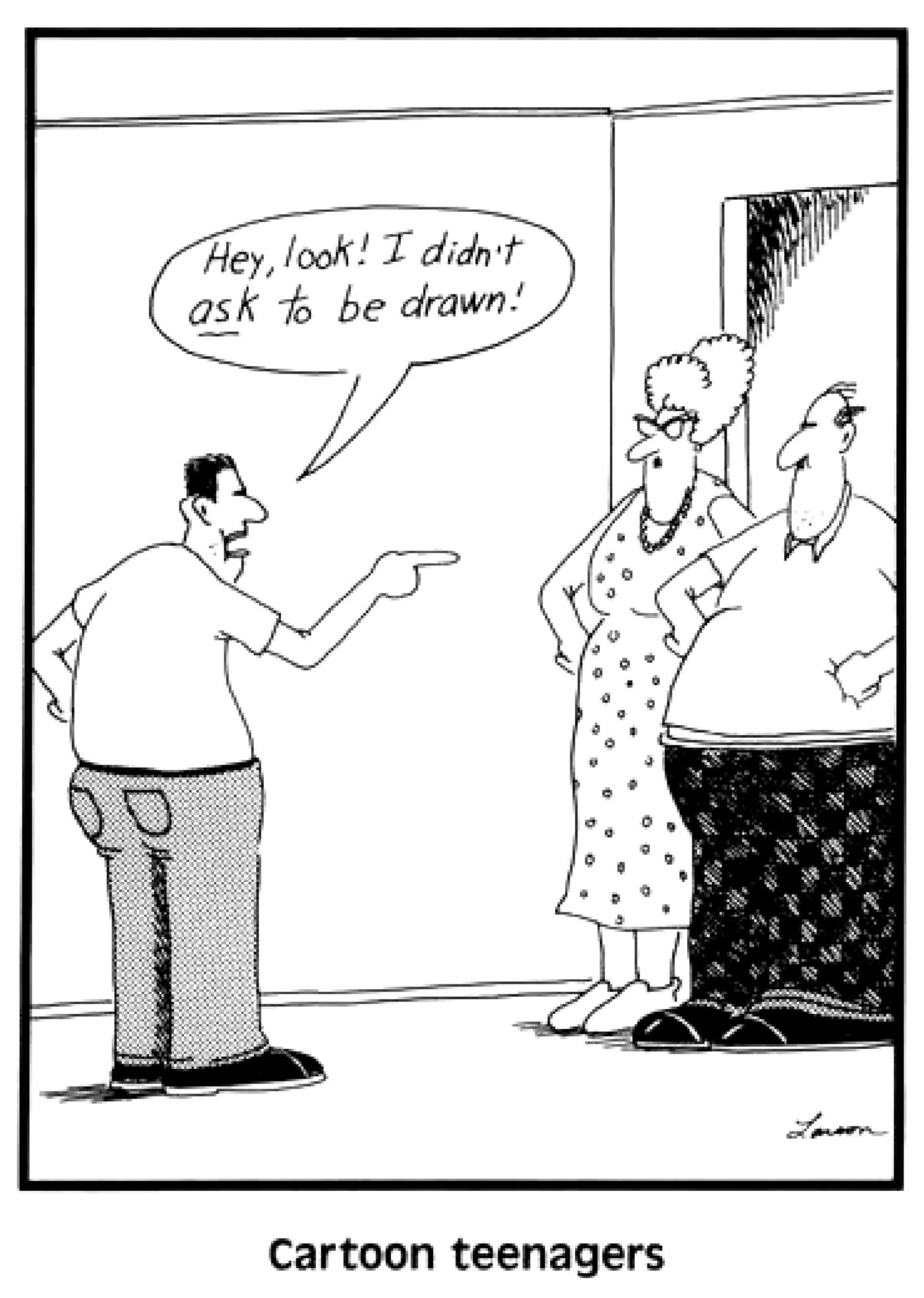
A classic (and basic) bit of wordplay sees a cartoon teenager flip the “I never asked to be born” argument that many parents will find familiar. There are many famous pieces of art where characters know they’re fictional, but comics tend to do it best. The nature of comic art offers lots of ways for characters to break the ‘rules’ of comics, for example straying beyond their ‘panel’ to interact with the rest of the story or looking ‘out’ of the page at the reader (something that has happened to DC’s Flash on multiple occasions.) Larson used this core idea multiple times, adding extra layers to the joke with this kind of ‘rule breaking.’
9 Sketchy Customers
Sometimes, It’s All About the Wordplay
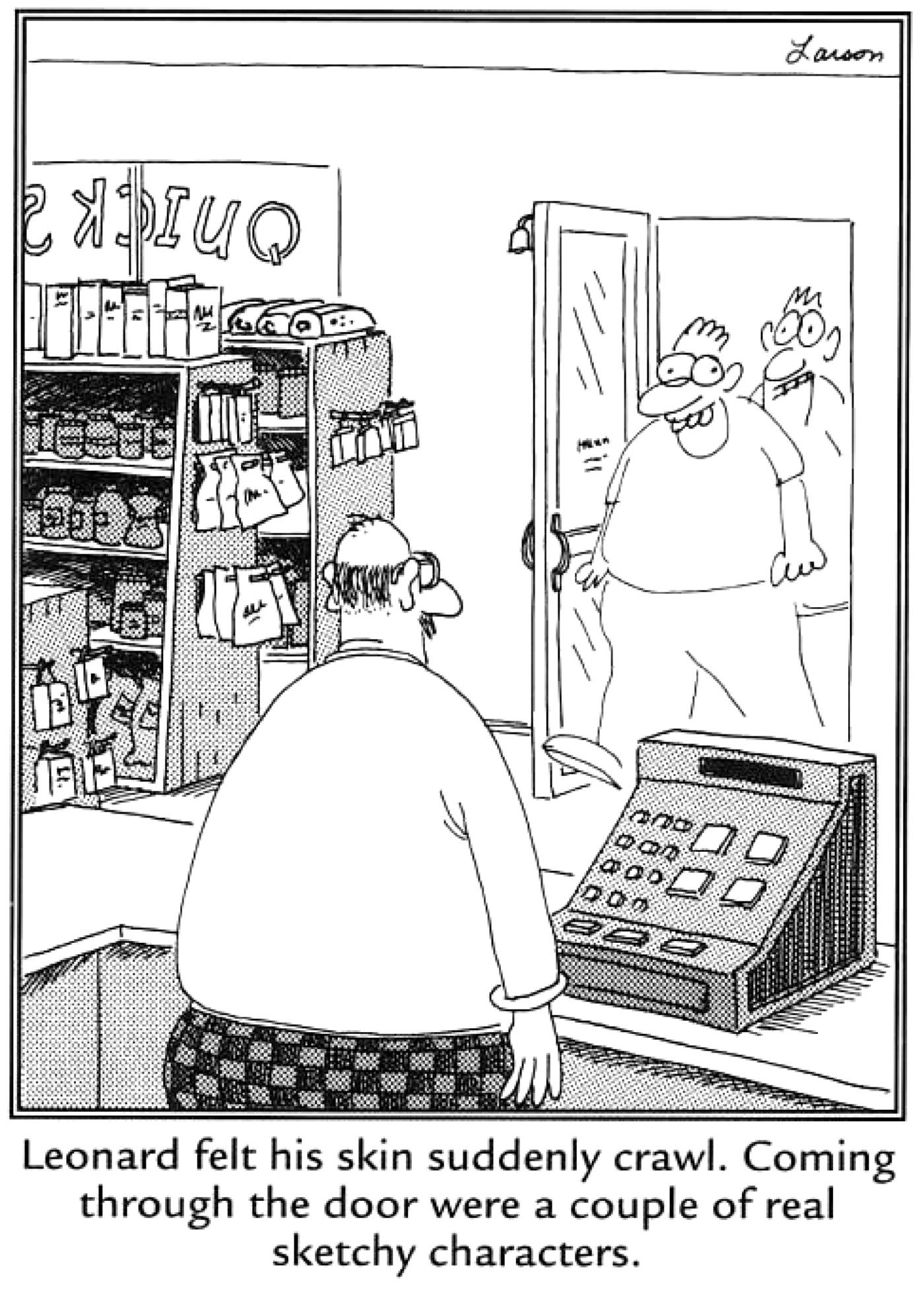
Despite its minimalist tendencies, The Far Side has an instantly recognizable art style. It’s therefore jarring to see Larson break that pattern with two deliberately poorly-drawn characters. Many of Larson’s comics go through multiple sketch versions before the final iteration. While the core joke remains the same, often Larson will approach the punchline at a different ‘moment’ in the story, or from a different perspective. While this comic suggests the biggest difference in these iterations would be the art, Larson’s The Pre-History of The Far Side reveals it’s the text that undergoes the most drastic (and numerous) alterations, with multiple struck-through versions of the punchline attempted before landing on the perfect phrasing.
8 Far Side Spy Center
A Dark Dig at Charlie Brown’s Expense

In this comic, Larson has some fun with the fourth wall by depicting his The Far Side characters spying on other successful newspaper comics (through, somewhat confusingly, the fourth walls of their own strips.) The characters working the system are Larson’s recurring figures – including his favorite comedic animals, a cow and a duck – but the screens also depict tiny one-note jokes that are surprisingly dark. Charlie Brown threatens to put Snoopy to sleep, Calvin and Hobbes’ titular kid is attacked by his imaginary friend, and Nancy wields a submachine gun. Garfield gets off easy, at least in this comic…
7 The Far Side vs Garfield
Yet Another Reason to Hate Mondays

In a copyright-safe image that doesn’t quite include all of Garfield’s name, The Far Side‘s swollen python lies by a household pet’s food bowl, looking smug. It’s a fun, direct callout of The Far Side‘s competitor comic, but also has a bizarre connection to Larson’s real-life experiences. In The Pre-History of The Far Side, Larson recalls his own Burmese python attempting to “do me in.” Larson got rid of his pet shortly after, but it was immortalized in his work, eating everything from a human baby to Snow White’s Seven Dwarfs to – apparently – Garfield himself.
6 Mary Worth
Far Side Mixes Things Up with a Different Art Style
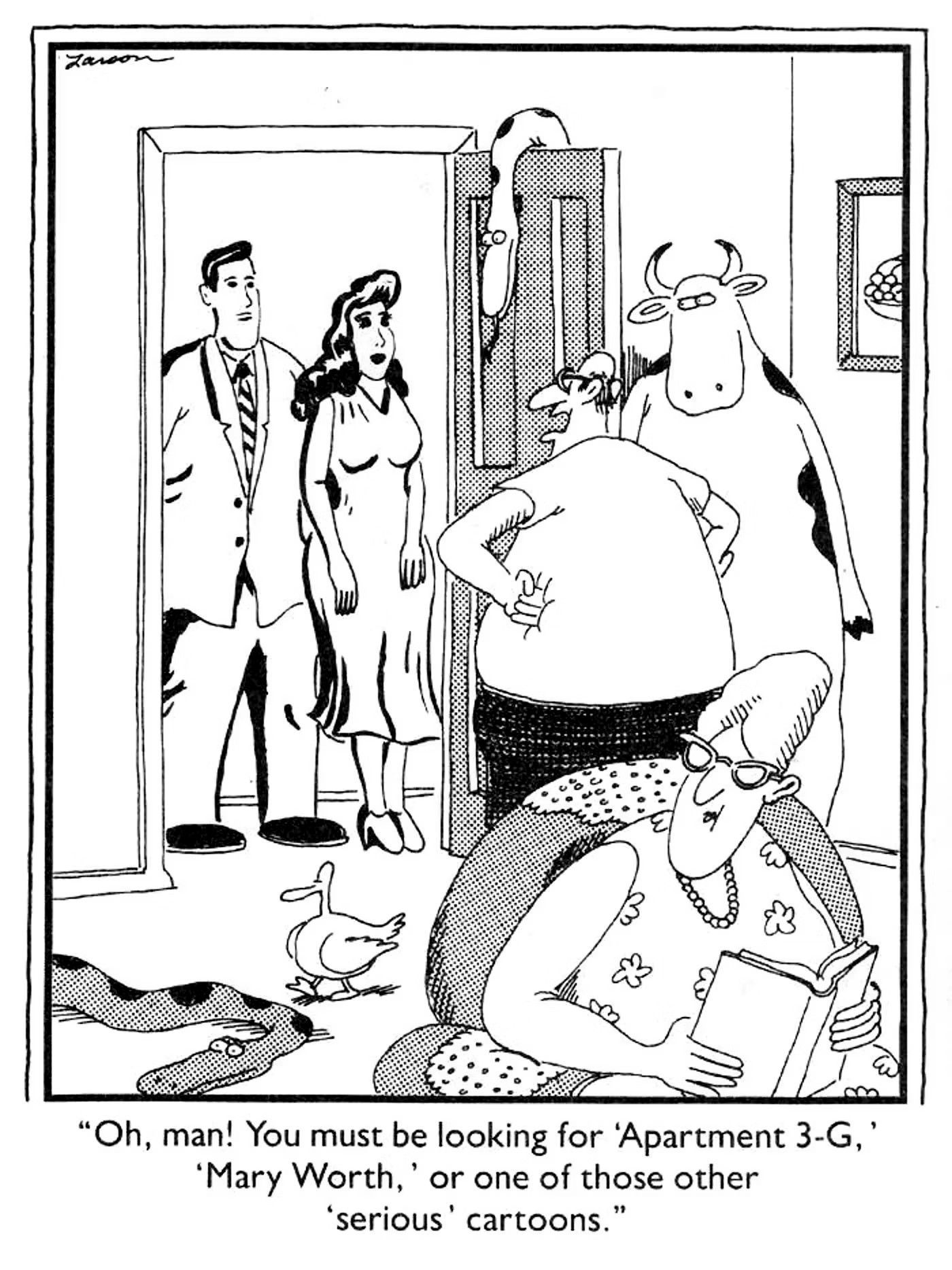
In this comic, more realistically-drawn visitors knock on the door of the apartment that all The Far Side‘s recurring characters apparently share, and are directed to the more serious soap opera comics Apartment 3-G or Mary Worth (which is still running today, having begun in 1938.) This strip takes the ‘sketchy customers’ concept from earlier in this list and does a little more with it, while also including the surreal joke of each comic strip having it own apartment where all the characters live between gags.
5 The Origin of The Far Side
Gary Larson’s Last Comic Was an Origin Story
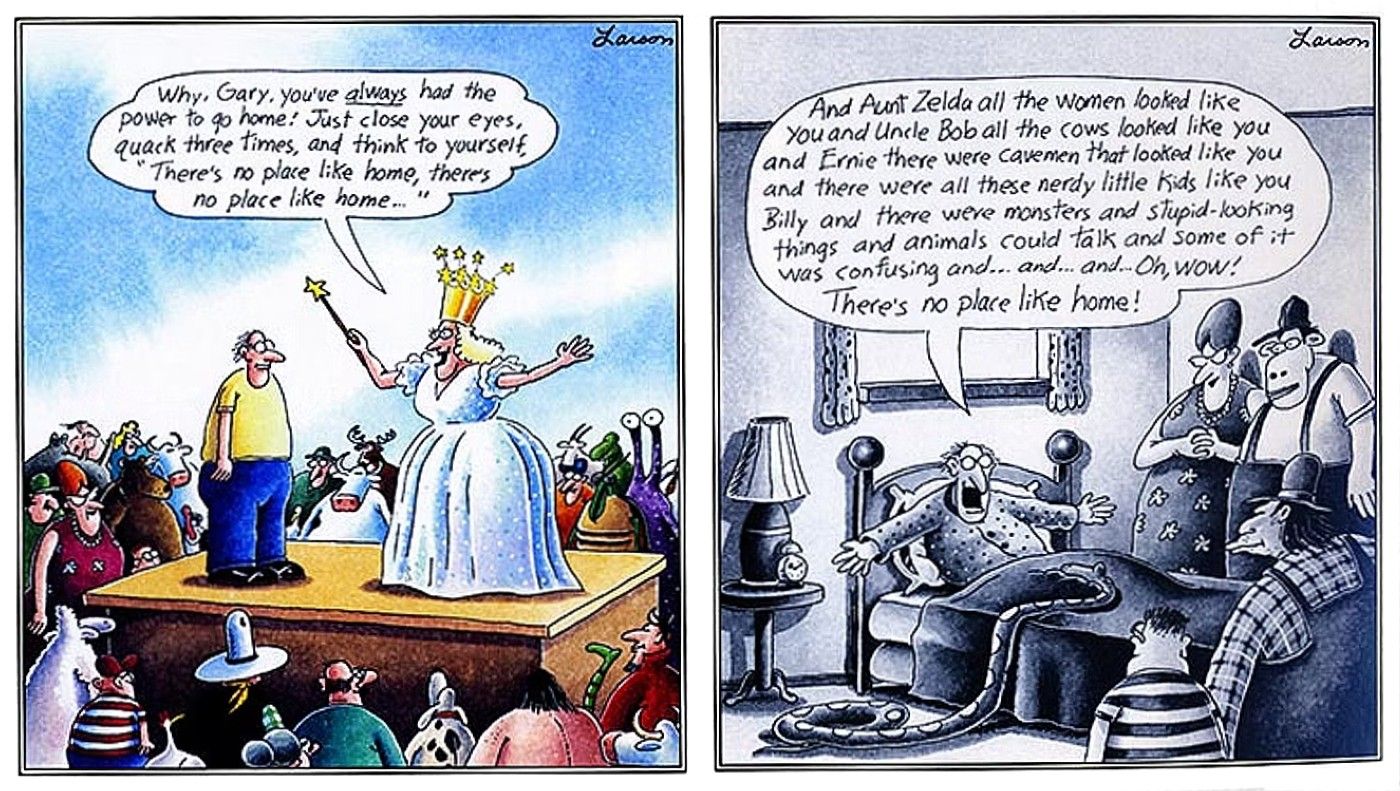
In the last strip of its original run, The Far Side pulled off a fantastic joke, parodying The Wizard of Oz. Gary Larson is shown waking up in bed, his recurring characters having all been inspired by people from his ‘real’ life (the cow-faced Uncle Bob is a particular highlight.) Larson didn’t engage in much autobiography in his work (save for one particularly embarassing comic), but used the occasion to tie the entire strip together while honoring an iconic movie.
4 Minor Key!
One Running Joke Took Many Forms
While The Far Side uses a lot of meta humor, one joke returns again and again in different forms – the idea that the characters in a movie can hear the score, and even change their behavior based on it. A rare The Far Side meta-joke that doesn’t reference the comic format, this joke is best expressed in its cowboy iteration, where – noticing a black-suited villain about to enter the saloon – the bar’s band switch to a menacing minor key. Larson plays with similar versions of this idea, showing a raccoon confidently foraging because the cheerful background means it’s safe, two men wondering why the Jaws soundtrack keeps playing, and Tonto from The Lone Ranger desperately trying to get his crime-fighting partner out of the outhouse because the show’s theme song just started.
3 Cartoon Glass
Larson’s Creations Try to Escape
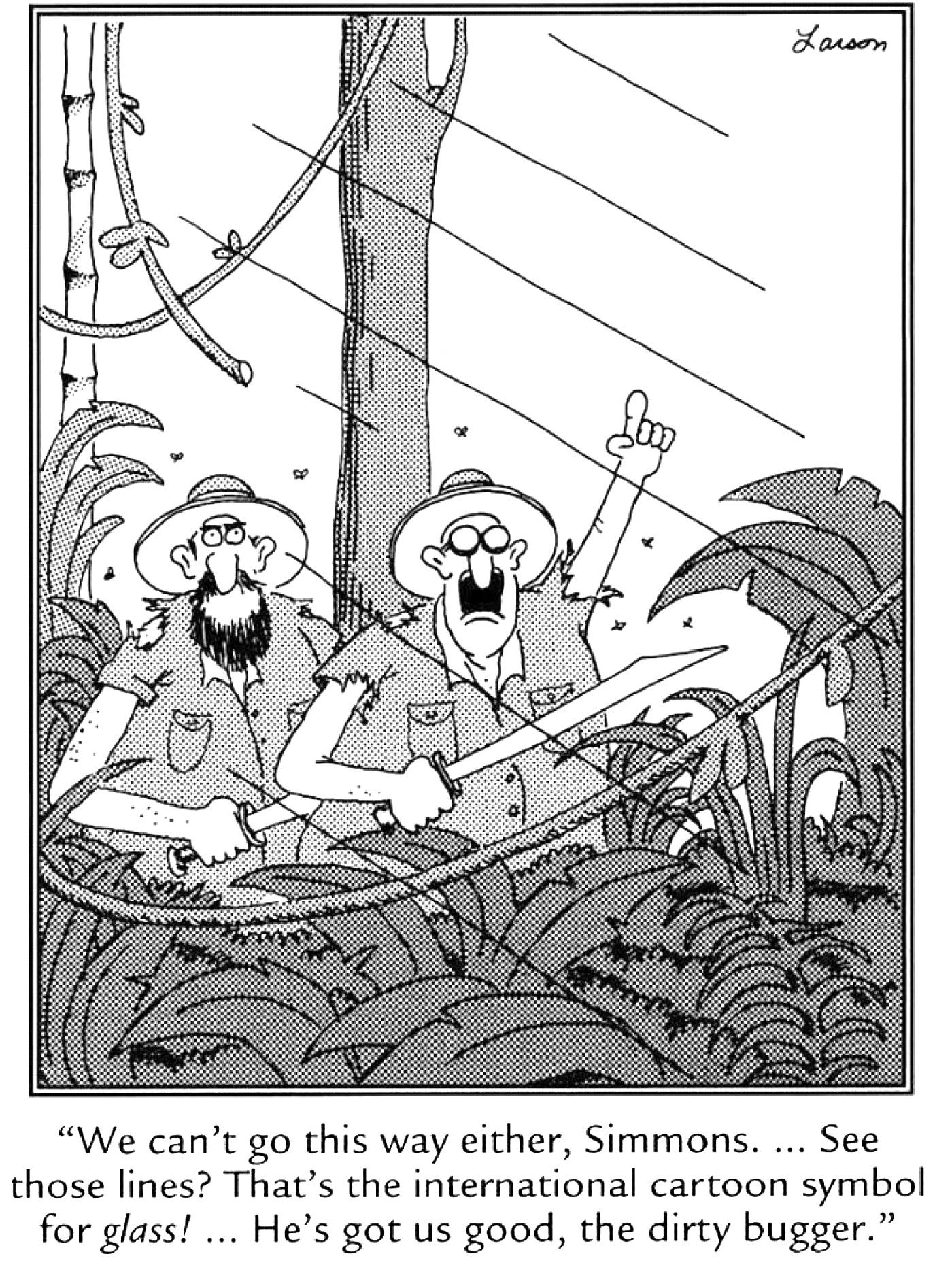
In one The Far Side‘s best meta comics, Gary Larson breaks the fourth wall by… adding a fourth wall. The Far Side has a lot of jungle adventurer strips, so on seeing the image nothing is amiss about the strip – causing a smart double-take once the reader checks out the caption and realizes what’s going on. Larson makes the joke even more satisfying by implying the adventurers have already been stymied by the cartoonist once, setting up a game of cat and mouse they can’t hope to win.
2 Bystanders
Before Photo Bombing, There Was The Far Side
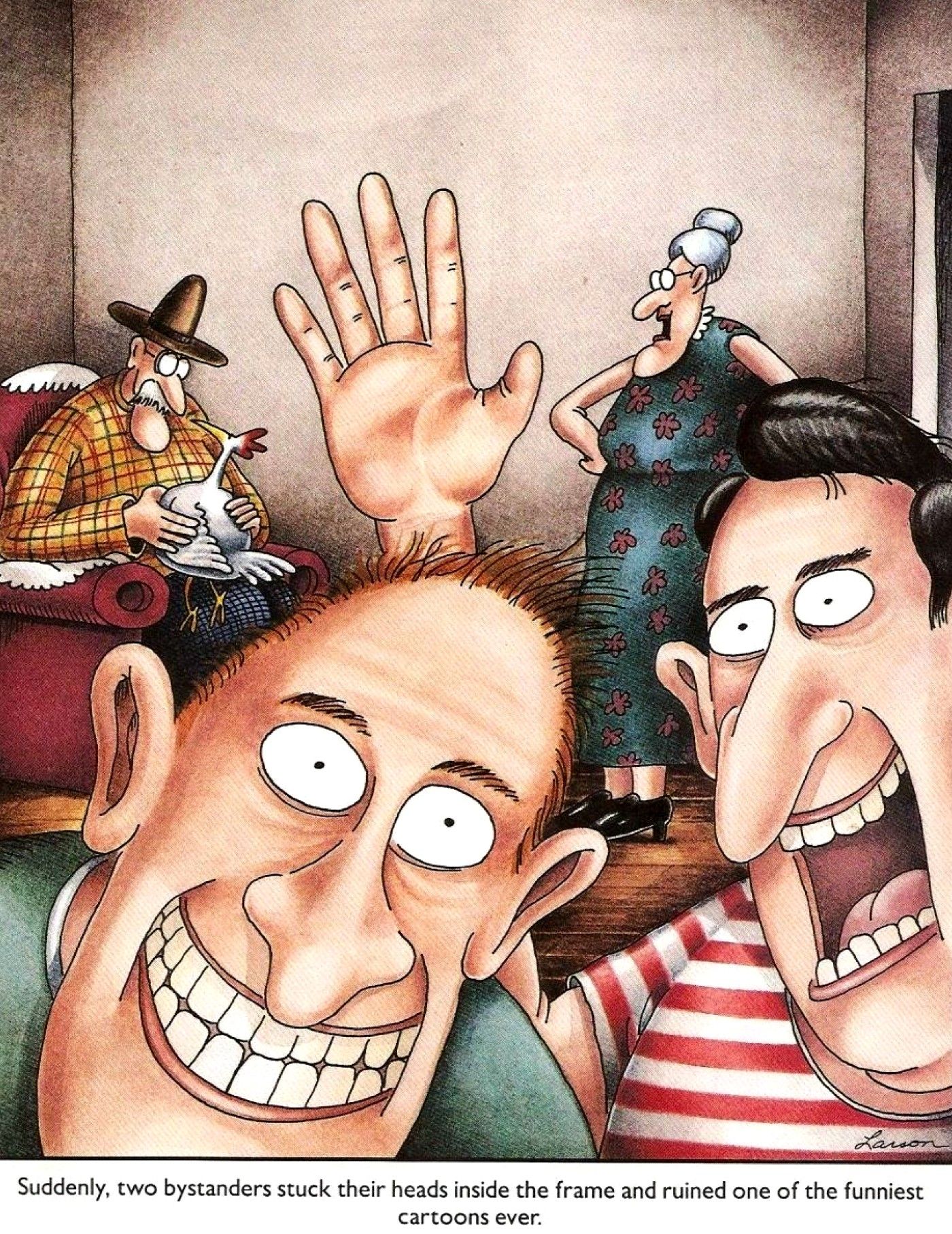
‘Photobomb’ might have been coined in 2008 (and named Word of the Year in 2014), but Gary Larson was depicting the concept years earlier. As Larson serves up one of The Far Side‘s classic chicken jokes, two oafish fans jump into the frame, obscuring what’s actually funny about this situation. Larson’s command of the single-panel comic is an underrated aspect of The Far Side, and he often uses the foreground and background to comment on each other and tell a more complex joke. Here, Larson breaks the rules (and shatters the fourth wall) by putting two interlopers way closer to the foreground than his usual comics, adding to the impression that they really shouldn’t be here.
1 This Is a Cartoon
Larson’s Funniest Meta Comic
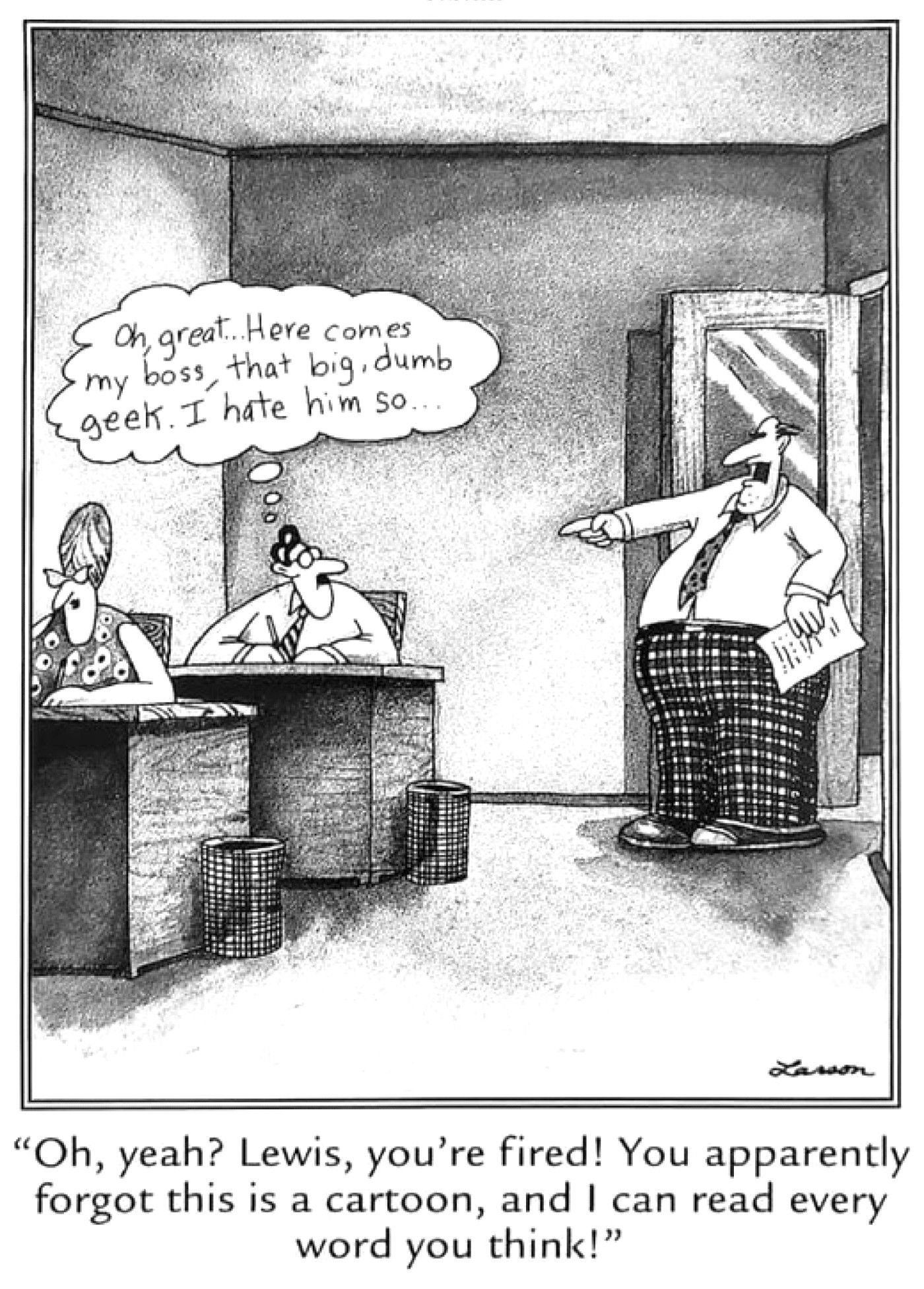
Larson’s best meta gag plays with the concept of thought bubbles, as a worker’s boss is able to see the mean thoughts floating above his head. However, what makes this The Far Side‘s best self-referential comic is how the dialogue is kept to the caption box. Larson has tons of comics where characters speak in speech balloons, and this would have immediately and simply sold the gag. However, by keeping the boss’ speech to the caption space, it amplifies the sense that some rules have been broken – as if the joke would have been something completely different if the boss hadn’t noticed his worker’s insults at that moment.
Bonus – Dennis the Menace
The Far Side & Dennis the Menace’s Caption Swap Was Surreal Genius

In August 1981, the Dayton Daily News published The Far Side and Dennis the Menace with its captions swapped – leading a snake to claim it could make peanut butter sandwiches, and Dennis to chow down on a hamster sandwich. Soon after, it happened again, with Dennis telling his mom, “I see your little, petrified skull… labeled and resting on a shelf somewhere.” While this joke wasn’t Larson’s, it was almost certainly deliberate – in The Pre-History of The Far Side, Larson makes it clear he doesn’t buy the “accident” story, and admits, “what’s most embarrassing about this is how immensely improved both cartoons turned out to be.”
The Far Side has long been seen as the smartest of the classic newspaper comic strips, and self-referential, fourth-wall-breaking jokes like those above show how it earned that reputation.
